
Isabella of France, sometimes described as the She-Wolf of France, was Queen of England as the wife of King Edward II, and de facto regent of England from 1327 until 1330. She was the youngest surviving child and only surviving daughter of King Philip IV of France and Joan I of Navarre. Isabella was notable in her lifetime for her diplomatic skills, intelligence, and beauty. She overthrew her husband, becoming a "femme fatale" figure in plays and literature over the years, usually portrayed as a beautiful but cruel and manipulative figure.

Robert Stewart, 2nd Marquess of Londonderry,, usually known as Lord Castlereagh, derived from the courtesy title Viscount Castlereagh by which he was styled from 1796 to 1821, was a British statesman and politician. As secretary to the Viceroy in Ireland, he worked to suppress the Rebellion of 1798 and to secure passage in 1800 of the Irish Act of Union. As the Foreign Secretary of the United Kingdom from 1812, he was central to the management of the coalition that defeated Napoleon, and was British plenipotentiary at the Congress of Vienna. In the post-war government of Lord Liverpool, Castlereagh was seen to support harsh measures against agitation for reform, and he ended his life an isolated and unpopular figure.
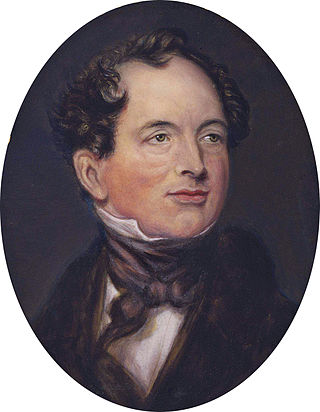
Thomas Moore, also known as Tom Moore, was an Irish writer, poet, and lyricist celebrated for his Irish Melodies. His setting of English-language verse to old Irish tunes marked the transition in popular Irish culture from Irish to English. Politically, Moore was recognised in England as a press, or "squib", writer for the aristocratic Whigs; in Ireland he was accounted a Catholic patriot.

The Pursuit of Love is a novel by Nancy Mitford, first published in 1945. It is the first in a trilogy about an upper-class English family in the interwar period focusing on the romantic life of Linda Radlett, as narrated by her cousin, Fanny Logan. Although a comedy, the story has tragic overtones.
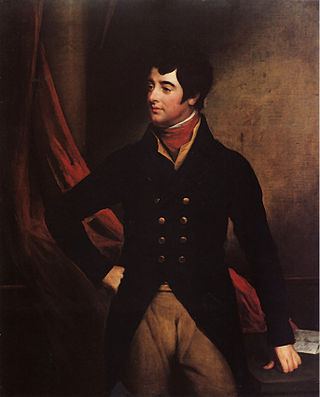
Lord Edward FitzGerald was an Irish aristocrat and nationalist. He abandoned his prospects as a distinguished veteran of British service in the American War of Independence, and as an Irish Parliamentarian, to embrace the cause of an independent Irish republic. Unable to reconcile with Ireland's Protestant Ascendancy or with the Kingdom's English-appointed administration, he sought inspiration in revolutionary France where, in 1792, he met and befriended Thomas Paine. From 1796 he became a leading proponent within the Society of United Irishmen of a French-assisted insurrection. On the eve of the intended uprising in May 1798, he was fatally wounded in the course of arrest.

Christopher Anstey was an English poet who also wrote in Latin. After a period managing his family's estates, he moved permanently to Bath and died after a long public life there. His poem, The New Bath Guide, brought him to fame and began an easy satirical fashion that was influential throughout the second half of the 18th century. Later he wrote An Electoral Ball, another burlesque of Bath society that allowed him to develop and update certain themes in his earlier work. Among his Latin writing were translations and summaries based on both these poems; he was also joint author of one of the earliest Latin translations of Gray's Elegy Written in a Country Churchyard, which went through several editions both in England and abroad.
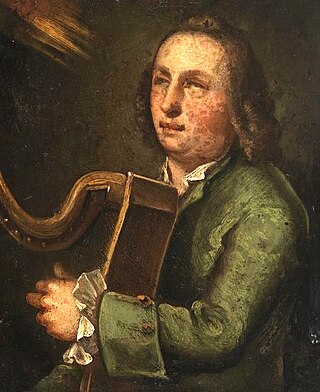
Turlough O'Carolan was a blind Celtic harper, composer and singer in Ireland whose great fame is due to his gift for melodic composition.

Roger Mortimer, 3rd Baron Mortimer of Wigmore, 1st Earl of March, was an English nobleman and powerful marcher lord who gained many estates in the Welsh Marches and Ireland following his advantageous marriage to the wealthy heiress Joan de Geneville, 2nd Baroness Geneville. Her mother was of the Royal House of Lusignan. In November 1316, he was appointed Lord Lieutenant of Ireland. He was imprisoned in the Tower of London in 1322 for having led the marcher lords in a revolt against King Edward II in what became known as the Despenser War.

Frances Milton Trollope, also known as Fanny Trollope, was an English novelist who wrote as Mrs. Trollope or Mrs. Frances Trollope. Her book, Domestic Manners of the Americans (1832), observations from a trip to the United States, is the best known.
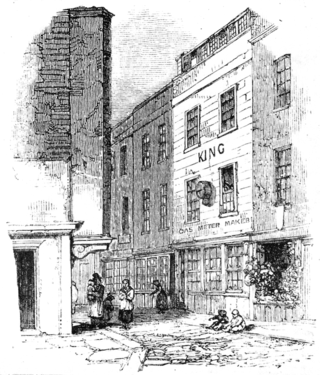
The Cock Lane ghost was a purported haunting that attracted mass public attention in 1762. The location was a lodging in Cock Lane, a short road adjacent to London's Smithfield market and a few minutes' walk from St Paul's Cathedral. The event centred on three people: William Kent, a usurer from Norfolk; Richard Parsons, a parish clerk; and Parsons' daughter Elizabeth.
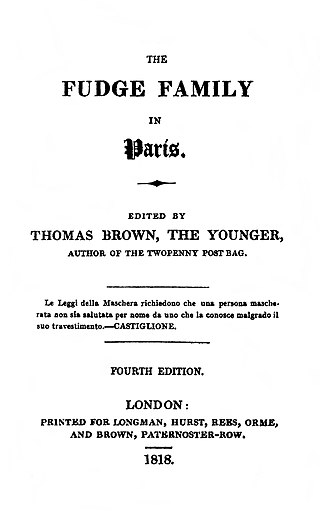
The Fudge Family in Paris is an 1818 verse satire by Thomas Moore. It was intended to be a comedic critique of the post-war settlement of Europe following the Congress of Vienna and of the large number of British and Irish families who flocked to France for tourism. Written after a brief trip to Paris, its popular success inspired several more parodies and replies.
Bridget Ellen "Biddy" Early was a traditional Irish herbalist and bean-feasa who helped her neighbours. When she acted against the wishes of the local tenant farmer landlords and Catholic priests she was falsely accused of witchcraft.

Frances Isabelle Parnell was an Irish poet and Irish nationalist. She was the sister of Charles Stewart Parnell and Anna Catherine Parnell, important figures in 19th-century Ireland.

MylesByrne was an insurgent leader in Wexford in the Irish Rebellion of 1798 and a fighter in the continued guerrilla struggle against British Crown forces in the Wicklow Hills until 1802. In 1803 collaborated closely with Robert Emmet in plans for a renewed insurrection in Dublin. After these misfired, he took a commission in Napoleon’s Irish Legion, seeing action in the Low Countries, Spain and at the Battle of Leipzig. Under the Bourbon Restoration he was deployed to Greece, and retired as a chef de bataillon. In his later years, he was the Paris correspondent for the Young Irelander paper The Nation, and dictated his memoirs. In these, he advanced the image of the United Irishmen as a cohesive revolutionary organisation dedicated to the achievement of a national democratic government.

Carnew is a village in County Wicklow, Ireland. It is the most southerly town in Wicklow situated just a mile from the border with County Wexford. For historical reasons it has often been described as "a Protestant enclave". The village is in a civil parish of the same name.

The Tudor period in London started with the beginning of the reign of Henry VII in 1485 and ended in 1603 with the death of Elizabeth I. During this period, the population of the city grew enormously, from about 50,000 at the end of the 15th century to an estimated 200,000 by 1603, over 13 times that of the next-largest city in England, Norwich. The city also expanded to take up more physical space, further exceeding the bounds of its old medieval walls to reach as far west as St. Giles by the end of the period. In 1598, the historian John Stow called it "the fairest, largest, richest and best inhabited city in the world".

Bridget Divers or Michigan Bridget was an Irish immigrant who rode with the First Michigan Cavalry during the American Civil War. Variations of her surname include Diver, Divers, Deaver, Deavers, Devens, Devins and Devan; and she was known as "Irish Biddy" to Sheridan's men. Unfortunately, none of the accounts of her combat activities come from a verifiable eye-witness. Much of the literature from the middle of the 19th century is written in an idealized and highly stylized form, conforming to the standards of propriety in that era. Nonetheless, careful analysis of surviving records show Michigan Bridget to have been a real person, after removing the almost mythological language frequently used to describe her exploits.
Joan de Geneville, 2nd Baroness Geneville, Countess of March, Baroness Mortimer, also known as Jeanne de Joinville, was the daughter of Sir Piers de Geneville and Joan of Lusignan. She inherited the estates of her grandparents, Geoffrey de Geneville, 1st Baron Geneville, and Maud de Lacy, Baroness Geneville. She was one of the wealthiest heiresses in the Welsh Marches and County Meath, Ireland. She was the wife of Roger Mortimer, 1st Earl of March, the de facto ruler of England from 1327 to 1330. She succeeded as suo jure 2nd Baroness Geneville on 21 October 1314 upon the death of her grandfather, Geoffrey de Geneville.
Thomas Darbyshire (1518–1604) was an English churchman and Jesuit.

Victoria Dubourg or Victoria Fantin-Latour was a French still life painter.


















